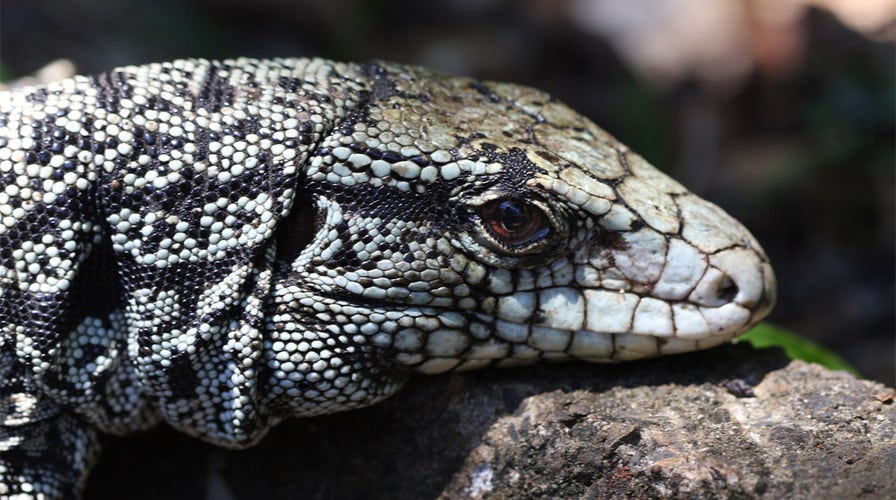Fox News Flash top headlines for May 13
Fox News Flash top headlines are here. Check out what's clicking on Foxnews.com.
Georgia wildlife authorities are trying to eradicate the invasive Argentine black and white tegu, an omnivorous lizard that can grow up to 4 feet long and is now established in Toombs and Tattnall counties.
They weigh more than 10 pounds and their diet ranges from smaller animals and the eggs of protected reptile species to fruit, vegetables and even grasshoppers, according to Georgia’s Department of Natural Resources (DNR).
They are also known to eat chicken and turkey eggs and to chow down on pet food stored outside.

Georgia wildlife authorities are trying to eradicate the invasive Argentine black and white tegu — an omnivorous lizard that can grow up to four feet long and is now established in Toombs and Tattnall counties.
Keeping tegus as pets is legal in Georgia, but releasing non-native animals into the wild is not.
Anyone who comes across one of the lizards, whether it is alive or dead, is asked to report the sighting to DNR officials to help biologists track their spread.
Because the tegus are an invasive species, they can be killed on private property with the owner’s permission and in accordance with applicable local laws.
5 OF THE MOST DESTRUCTIVE INVASIVE SPECIES IN THE US
The Argentine black and white tegu -- named for its coloring but native to the South American countries of Brazil, Paraguay, Uruguay and its namesake Argentina -- is the largest of all tegu species, according to authorities. They can live up to 20 years.
They have few natural predators and females can lay more than 30 eggs a year, according to the DNR. They are not considered aggressive toward humans, dogs or cats -- but they can be potentially dangerous with their sharp teeth and claws if threatened.
CLICK HERE FOR THE FOX NEWS APP
They can survive during colder months when they brumate, a reptile version of hibernation, experts say, making them a risk for spreading deeper into the state.
The DNR, the U.S. Geological Survey and Georgia Southern University are all involved in trapping, euthanizing and tracking the tegus in Toombs and Tattnall counties.
The invasive species is also present in Florida.

